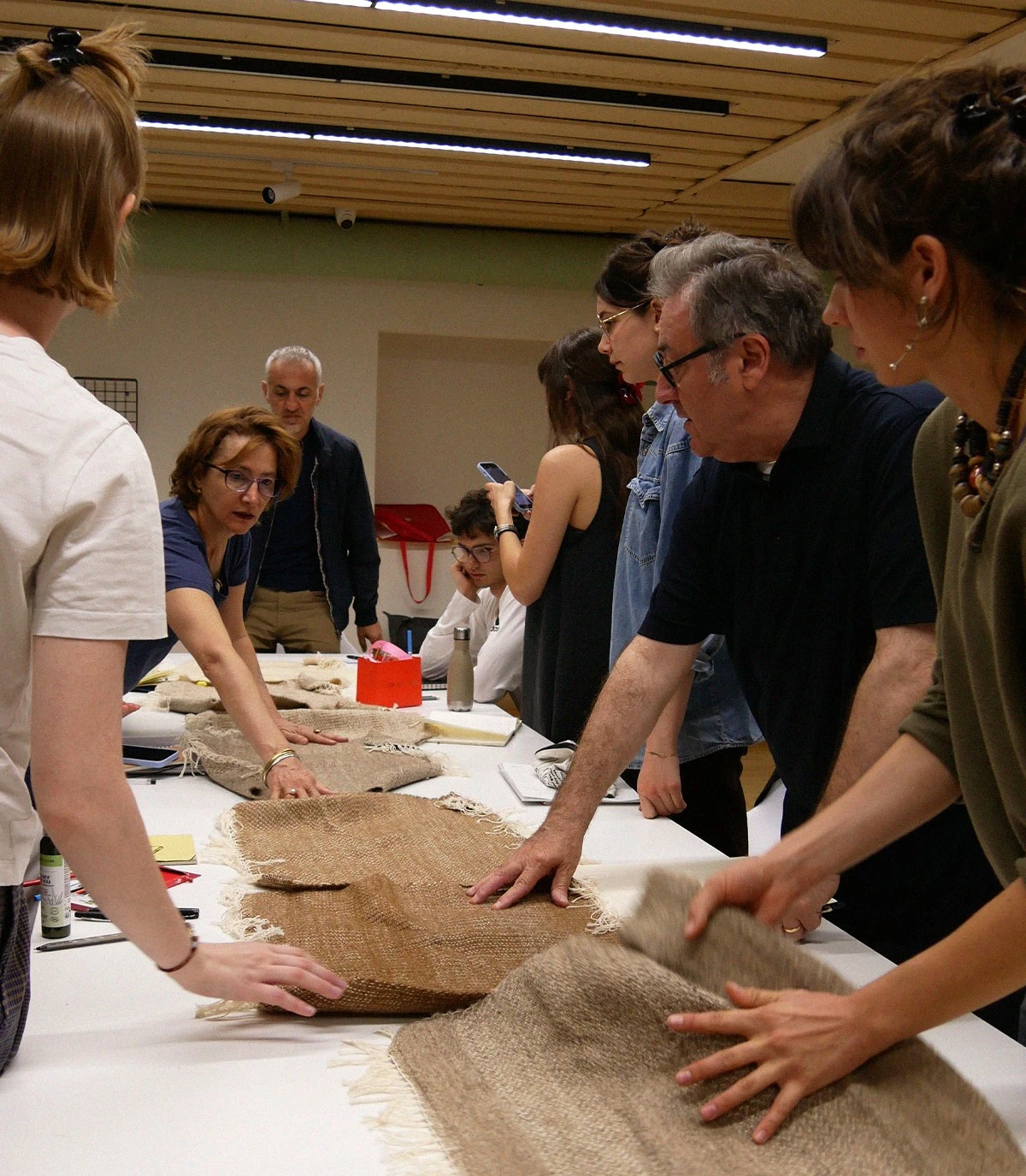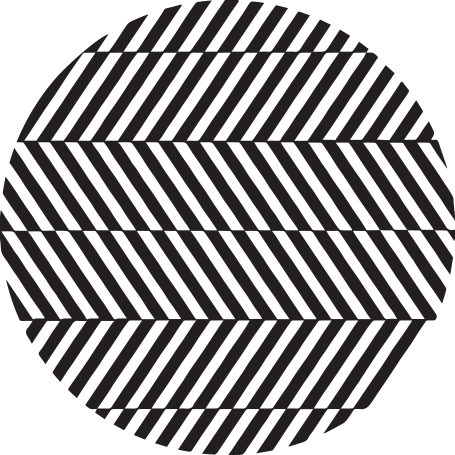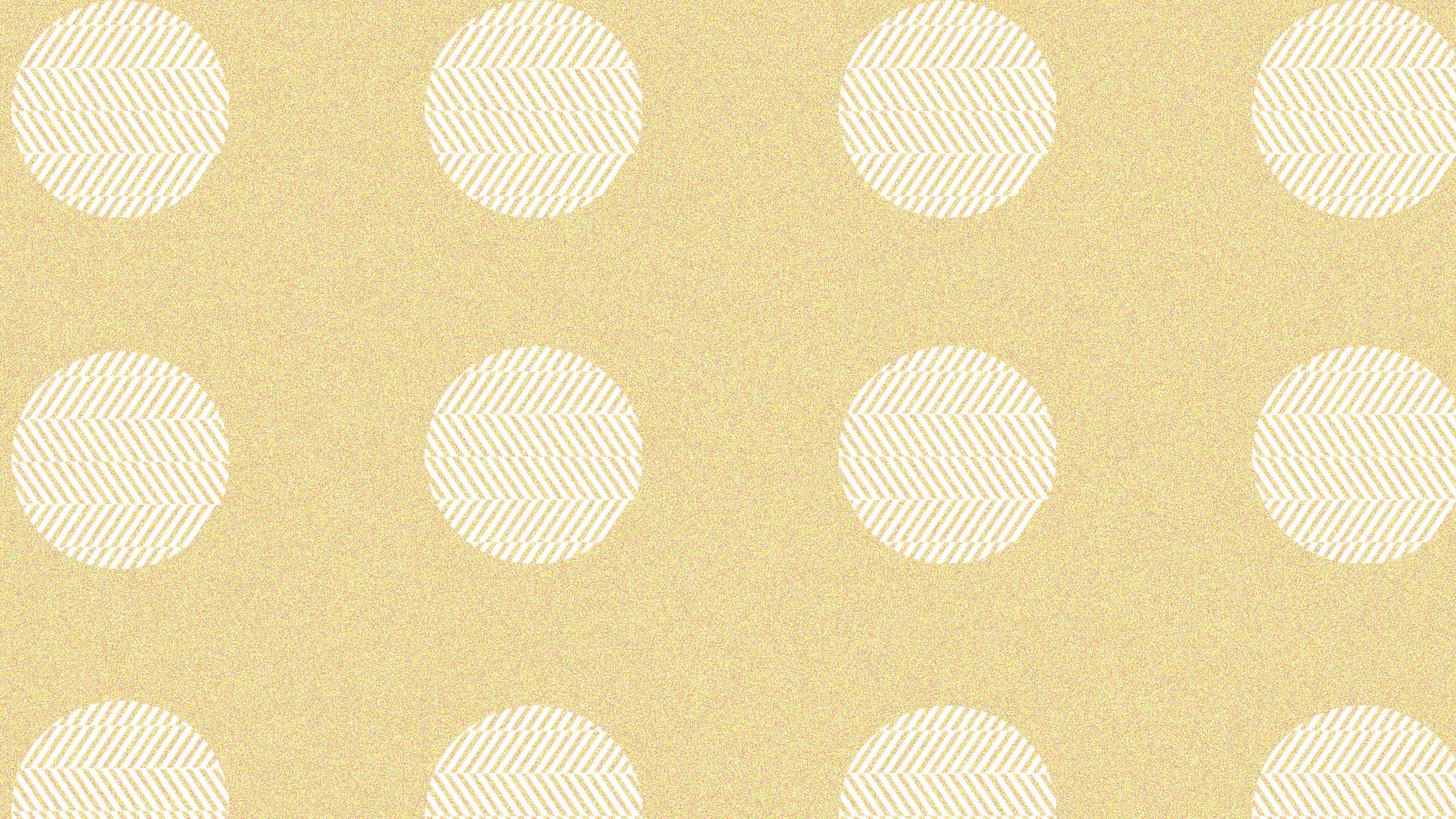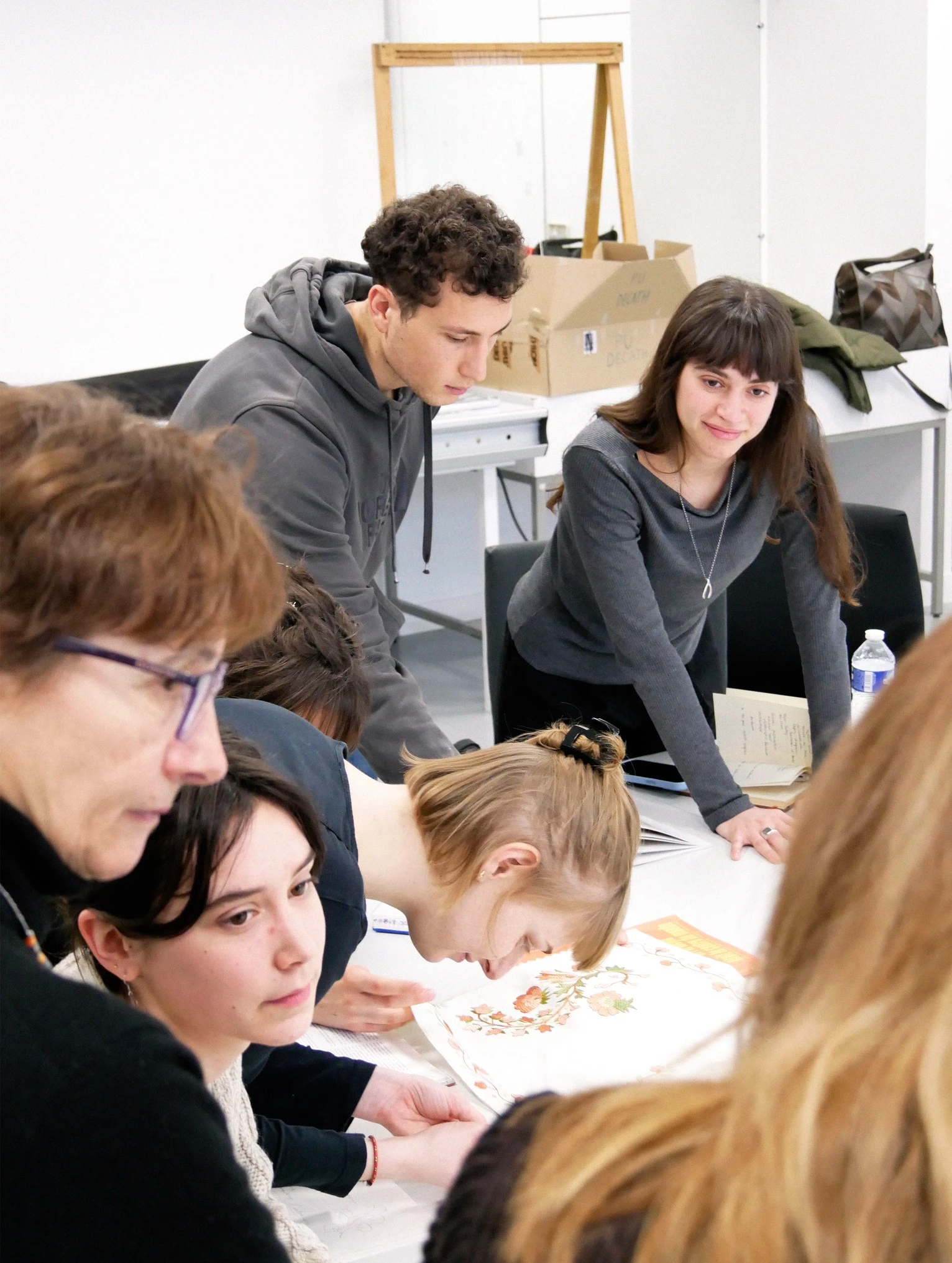
This practice, once widespread in the city of Ourfa, was rooted in everyday life. Women embroidered towels, scarves, handkerchiefs, and tablecloths, often according to their own tastes and preferences.
Beyond decoration, the embroidery carried meanings of care and attachment, and over time came to embody experiences of displacement and resilience.
Alongside developing contemporary collections, OCHRE is committed to the research and revitalisation of Armenian textile traditions. We initiate collaborative projects that explore and reinterpret these legacies.
As part of this mission, we are developing Heritage Rewoven in collaboration with École des Arts Décoratifs, PSL in Paris, France.
The project brings together students, professors, artists, artisans, and researchers from Armenia and the Armenian diaspora to study and engage with the embroidery tradition of Ourfa.
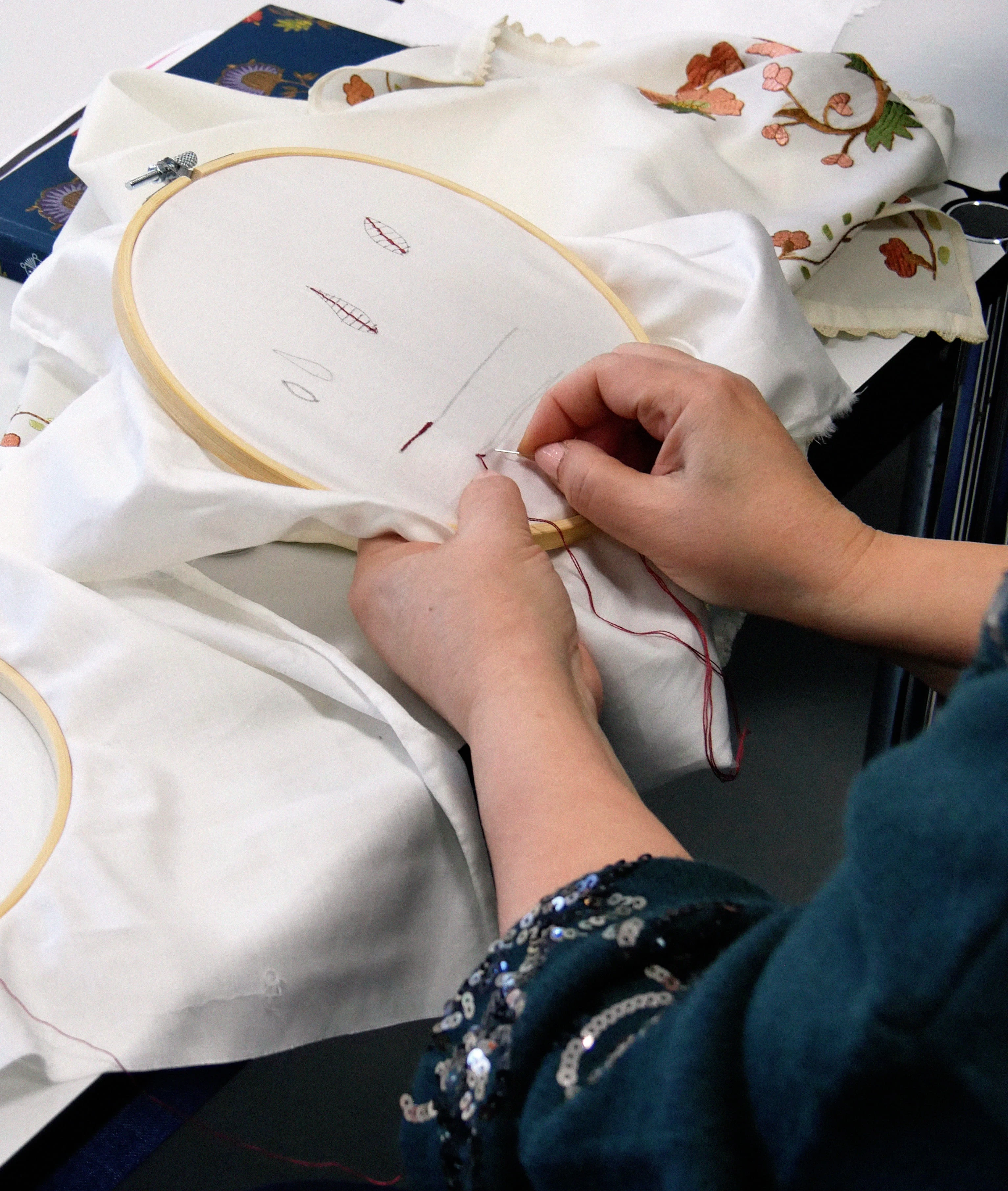
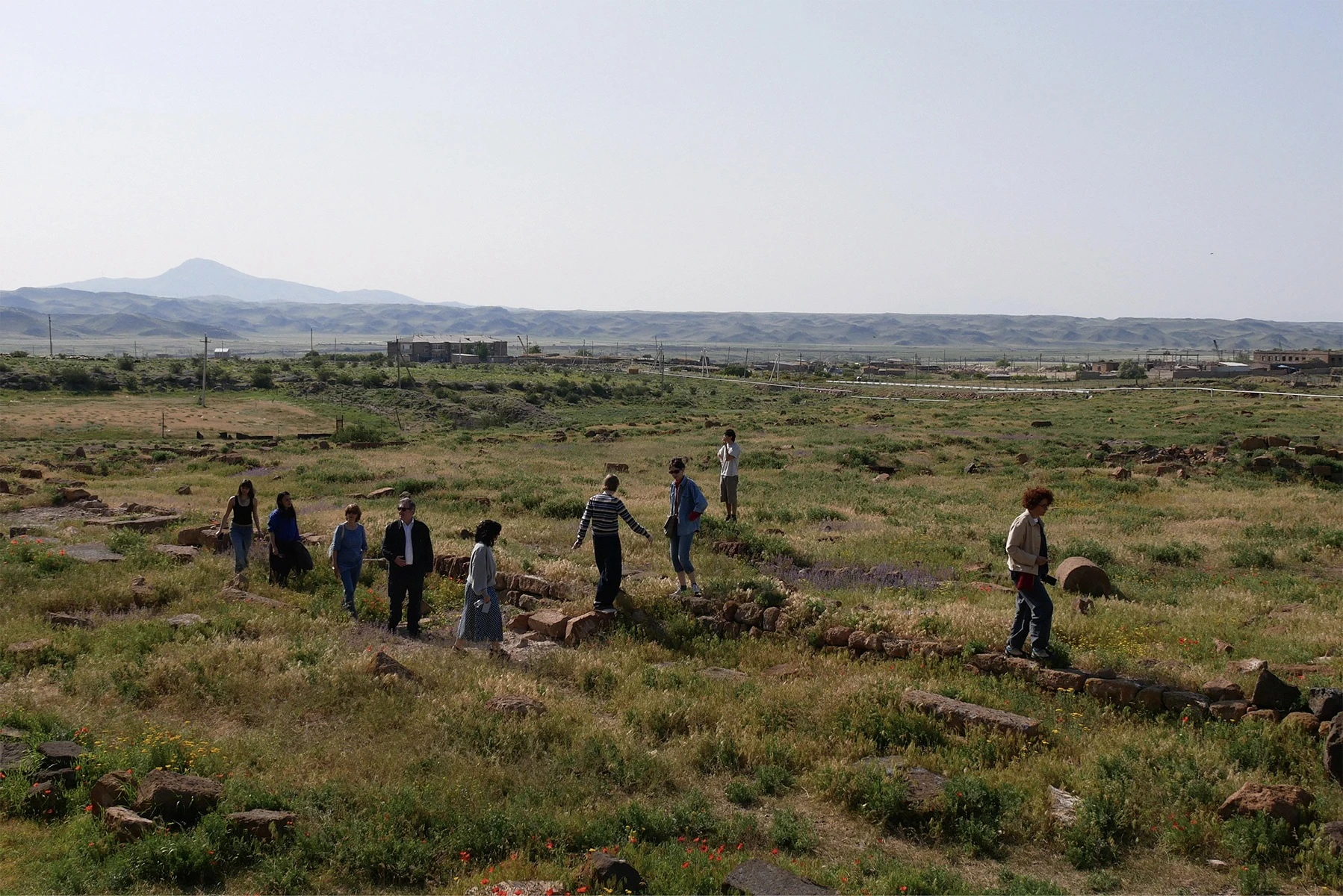

As with other Armenian embroidery traditions in the Ottoman Empire, such as those from Marash and Antep, the technique takes its name from its place of origin.
Today, Ourfa embroidery is primarily maintained in Syria and Lebanon by descendants of survivors of the Armenian Genocide, who have preserved and transmitted this savoir-faire.
Within Heritage Rewoven, this tradition becomes the focus of a collective artistic research project. We explore how cultural heritage can serve as a space for collaboration, design, and dialogue between Armenia and France.
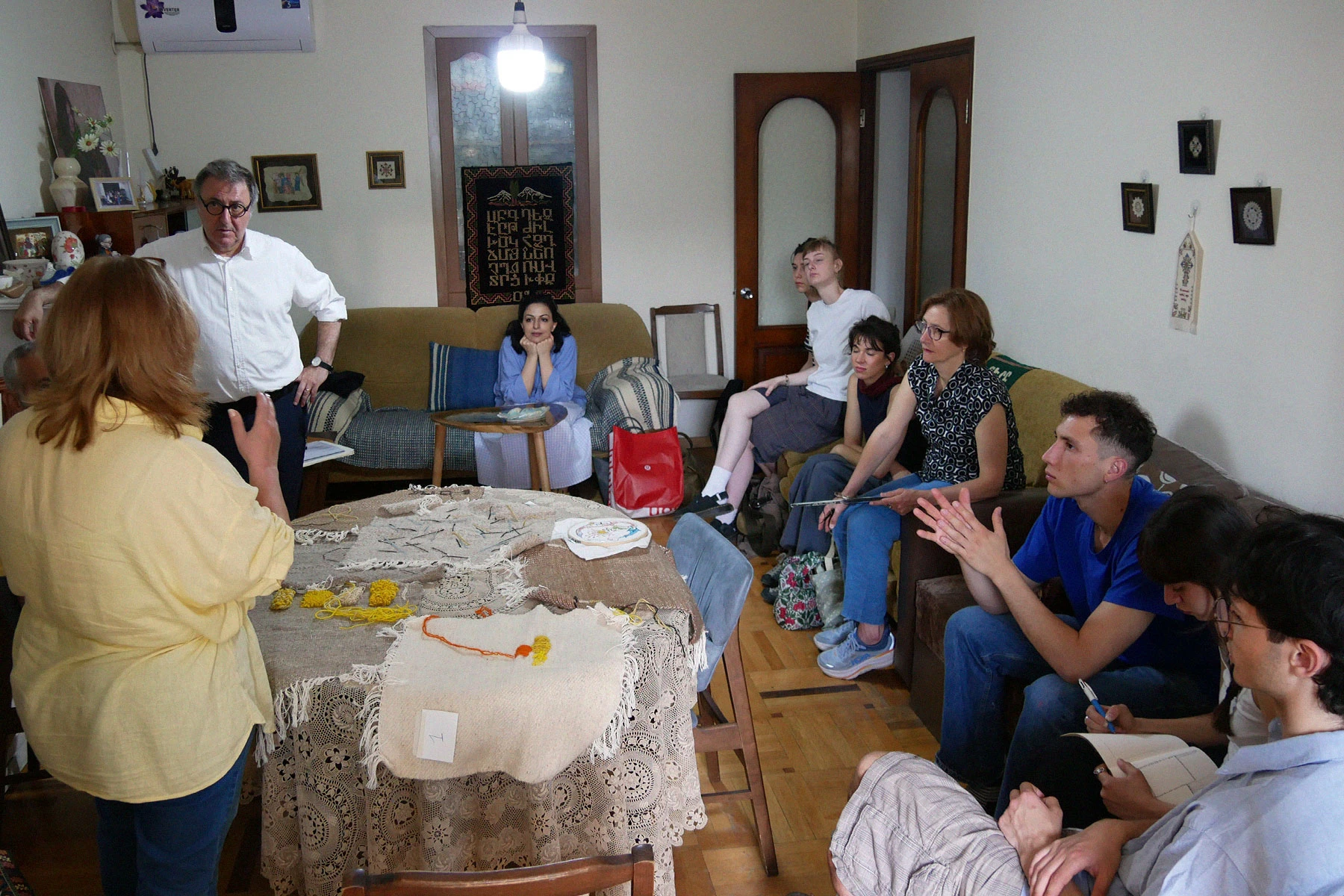
The first workshops were held in Paris in February 2025.
In June of the same year, eleven participants, Armenian and French artists, students, and professors, gathered in Armenia to continue the process and develop a design for a future collective artwork.
Over the course of a week, they exchanged perspectives, experimented with techniques, and created a digital drawing for a large-scale textile piece.
The work is currently in production in Armenia and will be presented in Yerevan and Paris in 2026.
